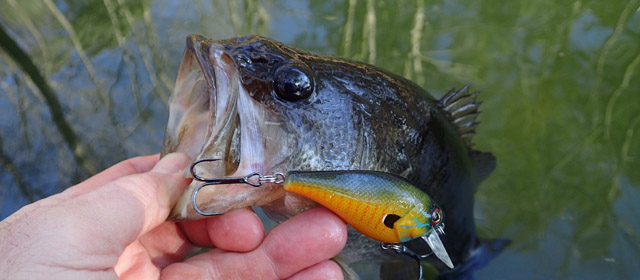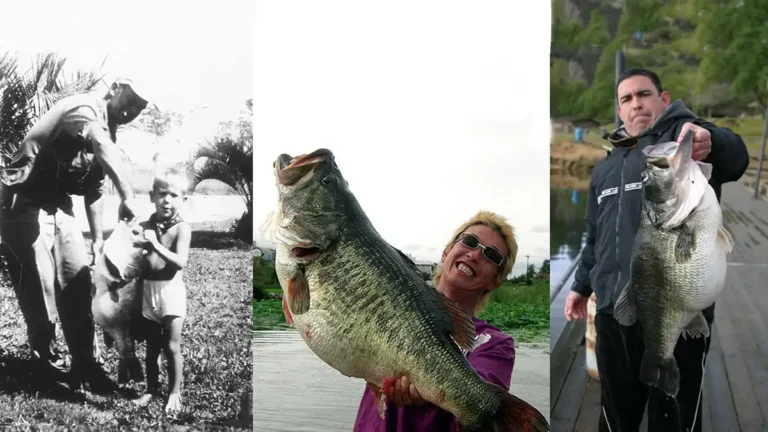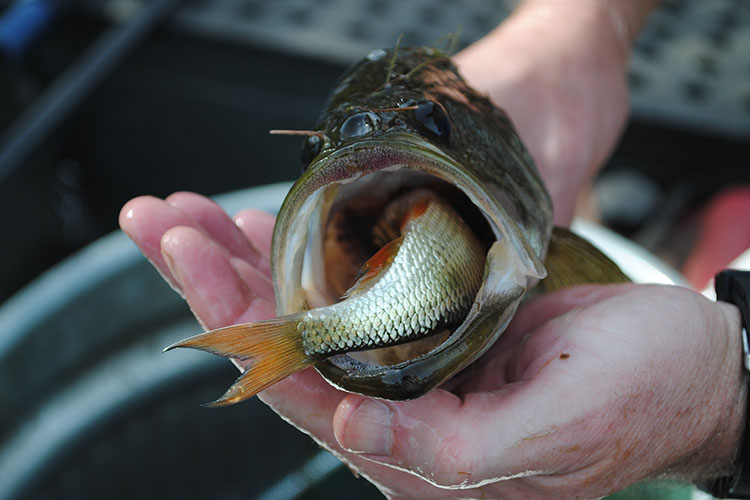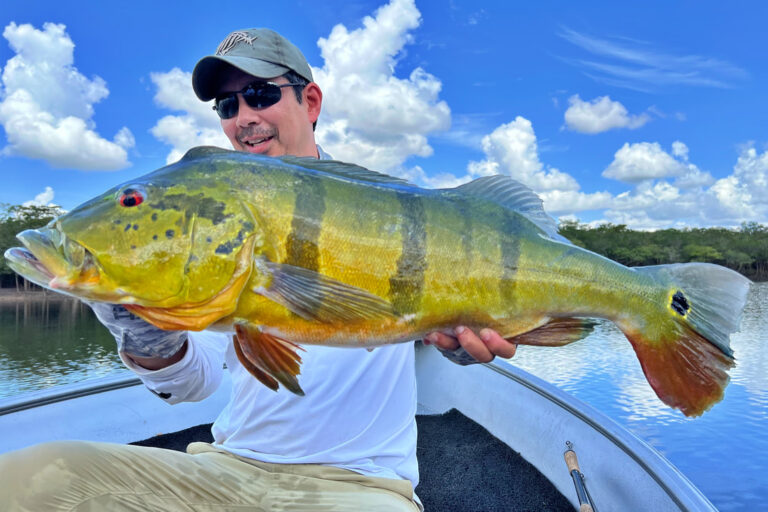How to Fish a Swim Jig for Bass

To fish a swim jig for bass, cast near cover and retrieve with a steady, moderate-speed reeling. Vary your retrieval speed to mimic live prey.
Fishing for bass with a swim jig is an incredibly effective technique that can yield impressive results year-round. A swim jig, often characterized by its streamlined head and skirt, mimics the movement of small fish that bass prey upon. It’s important to choose the right color and size to match the local forage.
Keep the presentation natural by maintaining a rhythmic, pulsing retrieval just above the weed beds or through other structures where bass lie in wait. Mastering the art of swimming a jig requires patience and practice, but once honed, it can become one of the most versatile methods in your angling arsenal. Remember to maintain contact with the lure at all times, as bass often strike unexpectedly on the pause or during the initial fall.
Swim Jig Basics
A swim jig is a versatile lure for catching bass. It mimics a small fish swimming through water. Bass find this irresistible.
Key features of swim jigs include a streamlined head. This helps them glide through water with ease. They also have a weighted head on one end. A hook is attached to the back.
| Swim Jig Type | Features | Best Used |
|---|---|---|
| Finesse Jig | Smaller profile | Clear water |
| Structure Jig | Snag-resistant design | Around solid objects |
| Grass Jig | Pointed head to cut weeds | Weedy areas |
Gear Up For Success
Choosing the perfect rod is key for swim jig success. A medium-heavy rod offers the ideal flex and strength. Length-wise, a 6’6″ to 7′ rod enhances casting distance and precision.
For reel selection, a high-speed baitcasting reel shines with swim jigs. It boosts retrieval and control. Consider a reel with a gear ratio of 7.1:1 or higher.
Match your reel with the right line for the ultimate setup. A braided line between 30 to 50 pounds offers strength and sensitivity. This ensures immediate hooksets and reduces the chance of break-offs.
Essential swim jig tackle includes a variety of jig weights and colors. A 3/8 to 1/2 ounce jig performs well in most conditions. Don’t forget a selection of soft plastic trailers to entice those bass!
Swim Jig Techniques
Mastering swim jig techniques boosts bass catch rates. A fluid cast targets coverage efficiently. Once submerged, a steady retrieval is key, maintaining lure depth and motion. Varying retrieval speed can entice bites; faster retrieves often trigger aggressive bass in warmer waters, while slower speeds may appeal during colder spells.
Rhythmic rod twitches add life-like action, mimicking prey. These movements spark predator instincts in bass, leading to more strikes. Sharp, quick jerks followed by pauses allow the swim jig to flutter and fall naturally, a proven technique for tempting hesitant bass.
| Technique | Effect |
|---|---|
| Steady Retrieval | Maintains depth, steady action |
| Vary Speed | Matches bass activity levels |
| Rhythmic Twitches | Mimics prey, induces strikes |
- Cast with precision to reach hiding bass.
- Embrace varied retrieval speeds based on water temperature.
- Adopt strike-inducing movements, like twitches, for a realistic jig action.
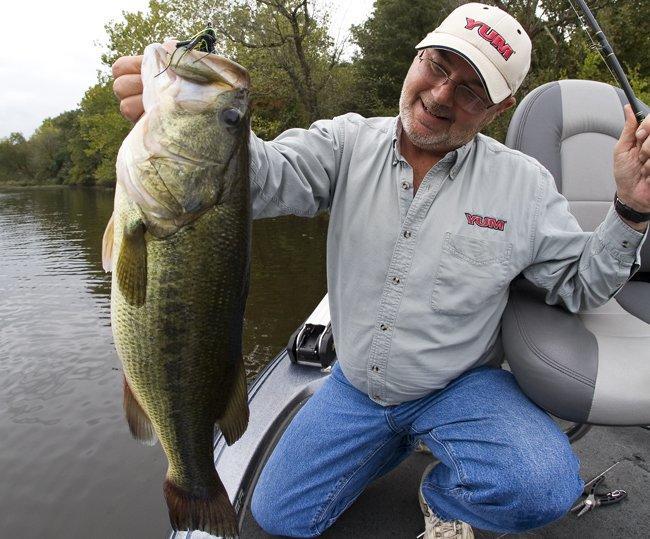
Credit: www.wired2fish.com
Location And Habitat
Fishing for bass demands knowing their habitat. Clear waters with ample aquatic vegetation provide ideal locations. Overhanging trees and submerged structures also attract bass. During spring, look for bass near spawning beds in shallow areas.
As summer approaches, target deeper waters as bass retreat from the heat. Drop-offs and ledges are good spots. Moving into fall, bass often return to shallows to feed. In winter, they favor deeper, warmer waters.
Bass adapt to their surroundings. They may hide under lily pads or near docks. Cast your swim jig around these areas. Bass often wait here for prey. Understanding these patterns is key for successful fishing.
Advanced Tactics
For swim jig success, choosing the right color makes a big difference. The color should match the baitfish in the area. Adding a soft plastic trailer can enhance the jig’s appeal, making it irresistible to bass. Try contrasting colors to make the jig stand out more in murky waters.
Clear water calls for natural colors like greens and browns. On cloudy days, gold and silver flakes in your jig can give you an edge. In muddy conditions, bright colors like chartreuse or white can be more effective.
Applying a subtle twitch to your rod tip can give the jig a lifelike action, mimicking a wounded baitfish. This technique can be deadly when bass are less active. Keep your movements small and sharp for the best results.
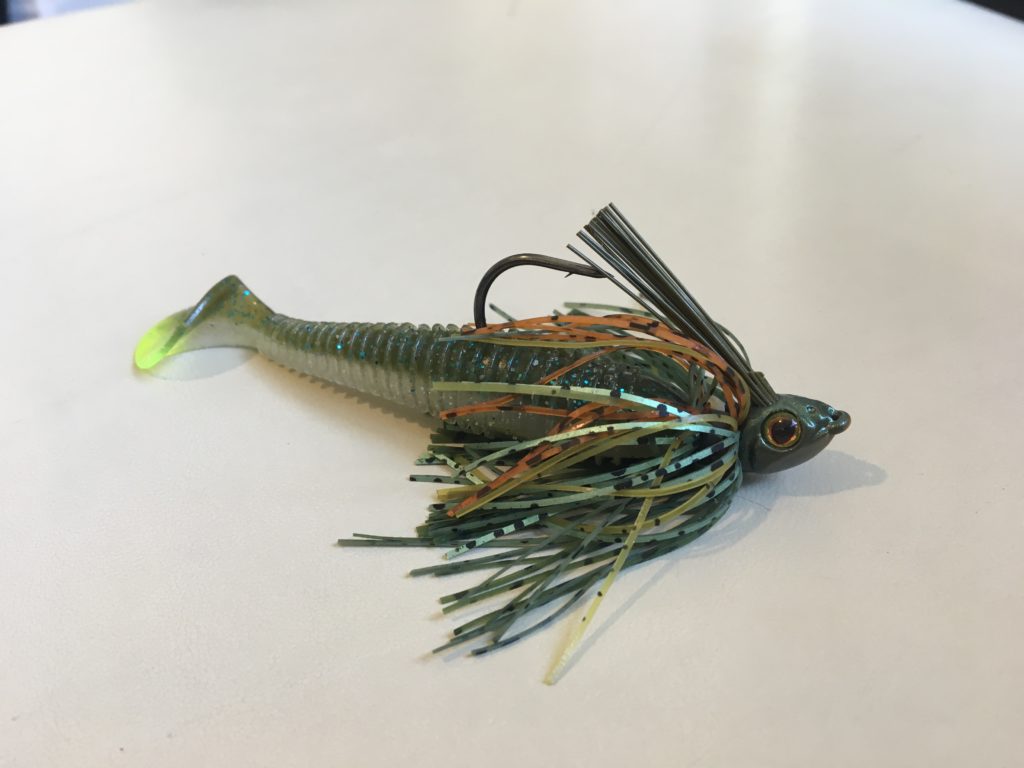
Credit: krakenbass.com
Practice And Patience
Fishing with a swim jig demands patience and consistent practice. To catch more bass, it’s essential to take time reviewing your performance after each fishing trip. This involves considering what worked and where there’s room for improvement. Analyze your lure selection, retrieval speed, and the spots where bass struck the jig.
Success in fishing also lies in adapting strategies to different lakes and rivers. Each body of water has unique features that affect bass behavior. Take note of water clarity, vegetation, and depth – these factors influence jig selection and presentation. Try varying your approach with different jigs and techniques until you find the most effective pattern for each location.
Building confidence comes from spending time on the water and mastering your jigging technique. The more you practice, the better you’ll get. Regular casting, retrieving, and experimenting with different speeds and movements are key. Keep at it, and soon you’ll feel ready to succeed on any body of water.

Credit: m.youtube.com
Frequently Asked Questions On How To Fish A Swim Jig For Bass
How Do You Bass Fish A Swim Jig?
To bass fish with a swim jig, cast it out and let it sink to your desired depth. Maintain steady retrieval, occasionally varying speed and adding twitches to mimic live prey. Work through vegetation and structures where bass hide, keeping the rod tip up to avoid snags.
How Do You Fish A Swimbait For Bass?
Cast your swimbait near structures where bass hide. Retrieve it steadily, mimicking a swimming fish. Vary your speed to entice bites. Use a slow, steady retrieve for colder water, and a faster, more erratic retrieval in warmer conditions. Match the swimbait size to the forage fish in the area.
When Should You Throw A Swim Jig?
Throw a swim jig during warmer months and in vegetation-heavy waters. It’s ideal for mimicking small baitfish when bass are actively feeding.
Can You Fish A Swim Jig Like A Regular Jig?
Yes, you can fish a swim jig similarly to a regular jig, varying retrieval speed and incorporating pauses for versatility and effectiveness.
Conclusion
Mastering the swim jig for bass fishing can truly elevate your angling game. Remember, key tips like choosing the right jig, perfecting your retrieval technique, and understanding seasonal patterns are crucial. Keep practicing, stay persistent, and your next trophy catch could be just a cast away.
Embrace these strategies and watch your bass fishing success soar!

